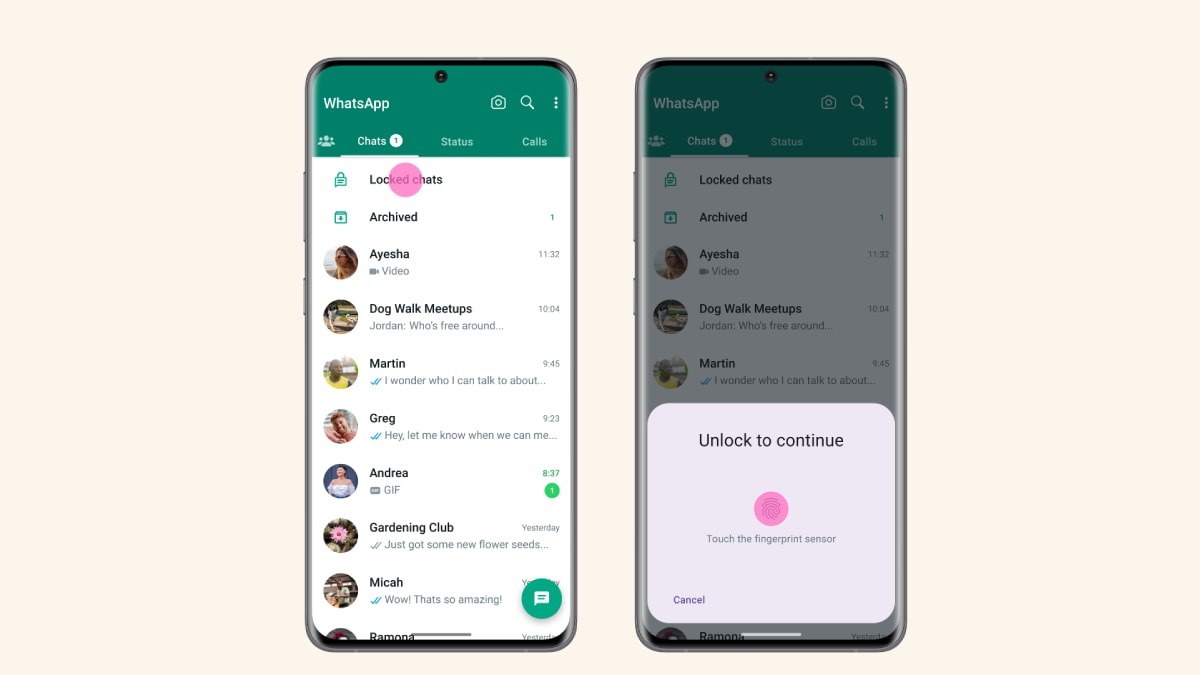WhatsApp introduced Chat Lock functionality that lets users lock specific chats using their fingerprint, facelock or passcodes back in May this year. Now, the Meta-owned instant messaging platform is reportedly testing a new secret code feature that will give users even more control over their locked chats. This would reportedly allow users to choose a custom password for their protected chat folder. The upcoming security feature has been spotted in WhatsApp for Android beta v2.23.21.9, which is available via the Google Play Beta program.
According to a report by WhatsApp features tracker WABetaInfo, WhatsApp will soon allow people to choose a custom password for their protected chat folder. This secret code feature would add another layer of security for sensitive conversations. Users can enter the secret code to access their locked chats from the search bar of the app. Configuring a secret code will reportedly let users lock chats from companion devices as well.
The messaging platform is said to be rolling out the update via the Google Play Beta program, with the 2.23.21.9 beta for Android. The feature is not available for testers now and is expected to be released in a future update of the app.
The publication has managed to include a preview of the secret code creation feature, offering users a glimpse at it. As per the preview, WhatsApp suggests using a word or a simple emoji for quick access. Users might be able to change or remove the secret code at any time.
WhatsApp released the Chat Lock feature in May for both Android and iOS users. It allows users to keep their messages and conversations private and secure by locking them using a passcode, fingerprint, or face unlock options. This feature will move locked chat threads to a different folder to ensure the privacy of conversations, even if someone did manage to gain access to the user’s phone. Notifications from these chats will neither show the sender’s name, nor the message preview.
Check out our Latest News and Follow us at Facebook
Original Source

